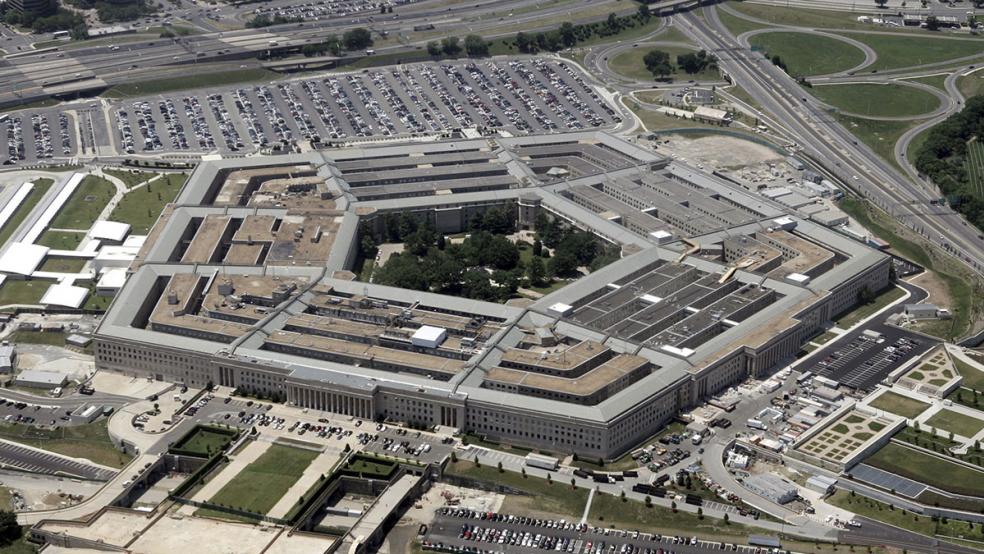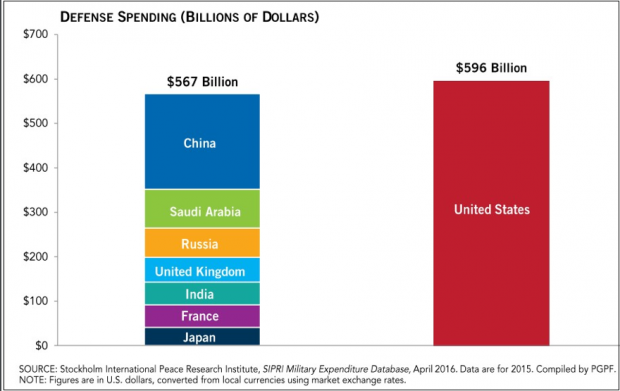Once again, top generals, including Defense Secretary James Mattis and Joseph Dunford, are crying poor on Capitol Hill and issuing dire warnings about losing “our competitive advantage.”
What the generals want – no, “need,” Dunford told the House Armed Services Committee -- is “sustained, sufficient and predictable funding.” And here’s the kicker: Without that assurance, America’s armed forces will lose their “ability to project power.”
Related: Why Trump Shouldn’t Give the Pentagon Another Dime
Patrick Tucker of Defense One explains that projected power is a kind of “mine is bigger than yours” competition when it comes to long-range missiles, sensors, signal jammers and other technologies that can repel U.S. forces in vital areas. The phrase became popular in 2010, a year before the Budget Control Act was enacted, and the year the Defense budget soared to $668 billion, including $130 billion in war funding, otherwise known as Overseas Contingency Operations.
For the first time, the Budget Control Act formally capped military funding, shattering the assumption that the Department of Defense was above concerning itself with trivia like invoices, contracts, audits and accounting. They were, after all, protecting the country and risking their lives. Who cares if they lose $2 billion in weapons in Iraq that might have ended up in ISIS’s hands?
It's one thing to lose your American Express card while disarming an IED in Iraq or Afghanistan. No one wants our fighting forces to lose their focus or worry about anything but the task at hand. But when the Pentagon employs 1,014,000 back-office personnel – almost as many as troops on active duty – you have to wonder why they can’t keep track of expenses.
Related: How the US Lost Track of $2 Billion Worth of Weapons Sent to Fight ISIS
The Pentagon actually buried an internal study that exposed $125 billion in administrative waste fearing Congress would use the information as an excuse to slash their budget, The Washington Post reported.
Hiding bad news seems to be par for the course at the Pentagon. A three-part Reuters investigation in 2013 claimed that the Pentagon was cooking the books to hide massive waste:
Linda Woodford spent the last 15 years of her career inserting phony numbers in the U.S. Department of Defense's accounts. Every month until she retired in 2011, she says, the day came when the Navy would start dumping numbers on the Cleveland, Ohio, office of the Defense Finance and Accounting Service, the Pentagon's main accounting agency. Using the data they received, Woodford and her fellow DFAS accountants there set about preparing monthly reports to square the Navy's books with the U.S. Treasury's -- a balancing-the-checkbook maneuver required of all the military services and other Pentagon agencies.
Maybe that’s why no one can figure out how the Pentagon spent more than $8.5 trillion since 1996. The military has never passed an audit partly because the Pentagon uses ancient accounting systems that are incompatible with anything on this planet. Why update to QuickBooks when you don’t want anyone to know how you’ve spent the taxpayers’ money?
To top it off, Reuters found a backlog of more than half a trillion dollars in unaudited contracts with third party vendors. No one seems to know how much of that money paid for actual goods or services.
This is not the year, not even the century, to blatantly waste taxpayer dollars. Even die-hard defense hawks know what a spreadsheet looks like, and they won’t abide cavalier incompetence for long when their constituents are calling for more public services, real investment in infrastructure, and a serious commitment to keeping our air and water clean.
This is the year to start managing the enormous budget provided to defense because the military is going to need it. Whether it’s fighting a cyber war with Russia, China or other countries; containing aggression from North Korea; supporting NATO; deterring Putin’s provocations; or fighting the endless war on terror, the U.S. is facing new threats from new weapons and new enemies while fighting hot and cold wars simultaneously.
Tucker writes, “This is not a distant threat. China watchers are increasingly concerned about anti-ship ballistic missiles such as the DF-21 … China is deploying weapons to its man-made islands in the South China Sea. Russia, too, is building new capabilities and putting them in more places.”
President Trump, with support from both parties, has ignored the budget restrictions the BCA imposed and plans to raise the defense budget by $54 billion, bringing the Pentagon’s real spending power to $639 billion, including the OCO.
Maybe he should ask for a receipt.







